Brick imitation
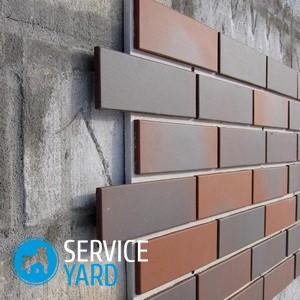
The design of the facade of the house, as well as the walls inside the apartment with decorative bricks or materials that imitate it, has been at the peak of popularity for more than a year. Unfortunately, it is not always possible to use a real brick for these purposes, since, in addition to making perfect masonry quite difficult, this material also makes the floor slabs heavier in multi-story buildings. Therefore, modern designers offer such a solution as brick imitation. With this approach, other, no less interesting methods are used, thanks to which it is possible to achieve not only the desired result, but also quite original textures that the real material does not give.
to contents ↑Flexible tile
Flexible tile that mimics brickwork is a great option that is suitable for both interior and exterior wall decoration. In addition to the fact that this material has a decorative function, it also has a number of advantages:
- Protection of the rough surface;
- Resistance to various atmospheric factors, including ultraviolet radiation;
- Impact resistance;
- Inertness towards microorganisms;
- Ease of installation.
Important! Installation of flexible bricks can be carried out not only on perfectly smooth surfaces. Due to its flexible structure, this material can be used to bend around the internal and external corners of rooms, which is why it is very often used for decorative decoration of not only internal surfaces and facades, but also columns and fireplaces.
Another advantage of flexible tiles is the presence of a wide range of different colors, respectively - you can not only make a single-color design, but by combining several shades, create a harmonious surface design.
Flexible brick installation process
In order to install flexible tiles to create an imitation of a brick wall with your own hands, you will need the following tools and materials:
- Smooth and serrated spatulas;
- Building level;
- A simple pencil;
- The ruler is 1,500 millimeters long;
- Scissors;
- Marking cord;
- 12 mm wide brush;
- Primer;
- Special tile glue;
- Flexible tile.
Important! You can use dry mixes to fix the tiles to the wall surface. But for convenience, experts recommend purchasing ready-made mixes that are packaged in plastic buckets and ready for use.
The work procedure consists of the following actions:
- Clean the wall of the old coating, level its surface.
- Grout the wall section where you plan to lay the tiles.
Important! Pay attention to the fact that all installation work on laying flexible tiles must be carried out at a temperature of at least +5 degrees. Otherwise, the adhesion between the materials will be insufficient, which will subsequently lead to peeling of the wall surface.
- Mark the prepared surface.
Important! If you plan to clad the entire wall, you must first beat off the upper and lower border lines.
- Apply glue to the area that you are going to work with now, using a level trowel and distribute with the help of a notched one so that the grooves you get are the same height.
Important! The adhesive layer should be 2-3 millimeters.
- Glue the tile. This should be done in order, and if the first row began with a whole “brick”, the second should begin with its half.
- Level the mortar in the vertical and horizontal seams. You need to do this quickly and immediately after you have laid the tile, otherwise - the adhesive solution will harden and you will not be able to do everything neatly.
to contents ↑Important! To smooth the solution, use a thin brush previously moistened with water.
Rigid brick tile
The main materials for the manufacture of decorative tiles are clay, cement, gypsum, as well as a variety of mixtures with the addition of fiber, plasticizers and coloring additives. The masonry technology of such tiles, although the same, but still has its own nuances, which we will tell you in more detail.
Gypsum tile
The most affordable option, with which you can achieve an imitation of a brick wall, is gypsum tile. Due to the fact that this material is lightweight, the installation process will not be a big deal for you.
Important! In order for adhesion to be as high as possible, it is best to use a gypsum-based adhesive to fix gypsum tiles to the wall surface.
The main disadvantage of gypsum tile is the lack of a finishing protective coating. Therefore, due to the fact that gypsum is a hygroscopic material, it is not recommended to use it in rooms with a high level of air humidity.
Important! Modern manufacturers have already released several versions of gypsum tiles with special additives that are part of it, which allow the use of this material not only in rooms with high humidity, but also for facade cladding.
Cement tile
This version of the finishing material is popular not only due to the wide color palette, but also because of accessibility, since it can also be done independently at home. In addition, cement tile has good performance characteristics, thanks to which it can be used in absolutely any room. The process of making cement tiles is very simple. To do this, you need to make a molding solution, which consists of sand and Portland cement with the addition of water.
Important! Experts recommend the use of Portland cement M500 and M400 for the manufacture of the molding solution. It should be taken in a ratio of 1: 2 or 1: 3 with the total amount of sand.
The solution should eventually have a pasty consistency, after which it must be decomposed in special silicone molds and left to solidify.
Important! You can give the product the right color immediately when mixing the solution, or apply the paint composition to future “bricks” after the tiles have completely hardened.
Brick tile
Clinker tiles are mainly used for cladding the facade of the building, due to its high performance. It is also suitable for interior decoration, but it is used much less often, since the price of the material is high. This is due to the fact that the materials used for its manufacture are natural, without artificial plasticizers and dyes. The raw materials are pressed followed by burning at fairly high temperatures, reaching up to 1200 degrees. Due to this, clinker tiles are considered the most environmentally friendly and reliable material.
Important! Clinker tiles have a low coefficient of moisture absorption, high wear resistance and frost resistance, inertness to chemicals and high temperature extremes.
General technology for mounting rigid tiles
For the installation of this material you will need the same inventory as for flexible tiles. The difference lies only in the fact that in this case you cannot make tile cutting with simple scissors, but you will need to prepare a hand-held circular saw or a grinding machine for these purposes.
As for the lining process itself, it should be carried out in the following order:
- Clean the surface from the old decorative coating, smooth and smooth it.
- Mark the surface. To do this, using a marking cord, beat straight lines along the upper and lower boundaries of the masonry, then divide the surface into the required number of masonry rows with horizontal lines.
Important! Pay attention to the fact that, when marking, about 10-12 millimeters should be allocated to each of the seams.
- Depending on the material you have chosen, prepare an adhesive solution.
- Starting from the bottom row, lay the tiles while constantly checking the construction level.
- Apply adhesive mortar about 3-4 millimeters thick on the wall, spread with a notched trowel over the surface. Attach the tile element.
Important! In the case of laying tiles that are rather heavy in weight, the adhesive must be applied not only to the wall surface, but also to the back side of the element itself.
- Seal the joints after the tiles have completely dried using special grouts.
to contents ↑Important! Grouting on the seams must be done very carefully, since if it gets on the front side of the tile, due to the relief of the material itself, grouting will be quite difficult to remove, and in some cases even impossible.
Brick mimic interior panels
Today, in addition to facing tiles, special panels are widely used for interior decoration of walls “brick-like”. The process of mounting them is much easier, since you can immediately capture a fairly large section of the wall, and between them they are assembled according to the principle of puzzles - butt to each other.
Interior panels made of MDF or PVC
The most popular panels today are those made of polyvinyl chloride or modified wood fiber boards. This is due to the fact that it is very easy to work with them, they are able to mask any imperfections and irregularities in the wall surface.
Important! If the installation of panels imitating brickwork is carried out on a previously erected frame, they can be used to hide all communications, including wiring.
In addition, decorative panels have a number of advantages in relation to other similar materials:
- A wide selection of different colors. Due to this, the panels are suitable for absolutely any interior design.
- An opportunity to use in the conditions of the increased humidity.
- Do not require prior surface leveling prior to installation.
Important! In addition to standard options, manufacturers began to produce interior panels with an additional heat-insulating layer - mineral wool, polyurethane foam or foam. They are called thermal panels and are used mainly for warming the facades of the house.
As for MDF panels, unlike PVC, they are not recommended for use in rooms with a high level of humidity.
Fiberglass Interior Panels
Such interior panels with imitation of brick are made on the basis of cement with the addition of glass fibers in it, due to which the strength of the plates increases significantly.
Important! For exterior decoration of facades, such panels can be additionally reinforced with metal elements, due to which the design becomes even more resistant to mechanical stress.
Such a facing material is ideal for interior wall decoration, but still it is used more often to transform the facade of the building. Its main advantage is that environmentally friendly plates not only do not make walls heavier, but also protect surfaces from exposure to moisture and various mechanical influences. Unfortunately, the cost of such “brick-like” interior panels is quite high, so not everyone can afford to purchase them.
Features of the installation of interior panels:
- If the wall surface is more or less even, in this case the panels can be fixed directly to it, without additional assembly of the frame.
- If the PVC panels are lightweight, they can be glued using polymer glue according to the “liquid nails” principle.
- As for MDF panels, due to their high weight, it is necessary to additionally fix the dowels in four to five places with glue.
- If the wall surface has significant distortions, it must first be corrected and the frame structure constructed.
Making walls for brickwork from homemade options
If you want to make an imitation of brickwork, and so that it is “cheap, but cheerful,” we suggest you use folk methods that have already been tested in practice.
The most popular of these include:
- Tile "under a brick" from foam;
- Imitation of masonry using a stencil;
- Create decorative masonry using masking tape.
Further on these methods we will tell you in more detail.
Production of "brick" tiles from foam
Expanded polystyrene, or, as the people say, polystyrene, is a fairly easy-to-use material with which you can create the perfect imitation of brickwork. The manufacturing process consists of the following steps:
- Prepare the surface of the wall - clean from the old decorative finish, smooth and carefully ground.
- On the area reserved for decorative decoration, make markings.
- Make the same markings on the foam sheet.
- Using a clerical knife, cut the foam sheet into separate elements.
- Decorate each element as a brick. To do this, make a furrow with a knife or sand it with sandpaper. This stage is completely dependent on your imagination.
Important! In order for your “foam” brick to have more rounded shapes, it can be scorched with a lighter or burner. The most important thing is to carry out this process in the open air, since polystyrene is a rather toxic material and emits toxic substances when burned.
- Paint the finished elements of the future masonry with water-soluble paints and varnishes using a brush or spray.
- According to the previously drawn markings, fix the foam with “liquid nails” on the wall surface.
- Fill the seams between the foam tiles.
Imitation brickwork using stencil
In order to make an imitation of masonry using a stencil on the wall surface, you will need a cement mortar. It is better to purchase it in the form of a dry finished mixture. It already contains all the necessary additives, so you don’t have to bother additionally, and the process will be simpler and more convenient.
Important! In order to make the solution more plastic, during its preparation add liquid detergent at the rate of 1 tablespoon per 5 kilograms of the mixture.
The process of decorative wall cladding consists of the following steps:
- Clean the wall, ground it and dry thoroughly.
- Using a spatula, apply the mortar to the wall surface. The layer thickness should be the same as the thickness of the stencil strips.
- Attach the stencil to the plaster already applied to the wall, press it.
- Remove the stencil, attach next to the prepared area. This should be done exactly so that the masonry in the end you get without distortions.
Important! So that the stencil can be easily removed and it does not stick to the plaster, it must first be thoroughly moistened with water.
- After you have applied the relief to the surface of the wall, leave it alone until the mortar completely dries.
- Paint the finished “bricks” in the color you need, process the seams between them.
Important! To paint such a brickwork, it is best to use acrylic-based coloring compounds, and the surface must be carefully primed before painting.
Creating a simulation of brickwork with masking tape and plaster
For this method, you will need the same solution as in the previous method, as well as masking tape, which can be replaced with electrical tape if necessary.
Important! Pay attention to the fact that the width of the tape should be 14 millimeters. If this did not work out for you, in this case you will have to divide the tape exactly in half right in the skein. Do this very carefully.
Once everything has been prepared for work, you can proceed directly to the process. The course of work consists of the following actions:
- Prepare the surface, apply a marking imitating brickwork on it.
- According to the marking, stick masking tape along all the lines.
Important! The vertical strips of tape should be well glued to the horizontal and be in the direction from top to bottom.
- On the surface of the wall, apply a plaster solution with a thickness of 5-6 millimeters with a spatula.
Important! In order to give the masonry additional texture, at the end of the process of applying plaster to the wall, you can walk on the surface with your hand in a rubber glove.
- Carefully remove the adhesive tape and smooth the surface.
- Paint the finished brickwork in the color you need.
Stock footage






As you can see, in order to make brickwork for decorative purposes, you do not have to use the brick itself. The modern building materials market is full of various options that mimic the brickwork, thanks to which you can create a stylish and original interior of the room in much shorter terms and with less physical effort. We hope that our article will not only help you in choosing building materials, but also inspire new ideas and experiments.
- How to choose a vacuum cleaner taking into account the characteristics of the house and coatings?
- What to look for when choosing a water delivery
- How to quickly create comfort at home - tips for housewives
- How to choose the perfect TV - useful tips
- What to look for when choosing blinds
- What should be running shoes?
- What useful things can you buy in a hardware store
- Iphone 11 pro max review
- Than iPhone is better than Android smartphones



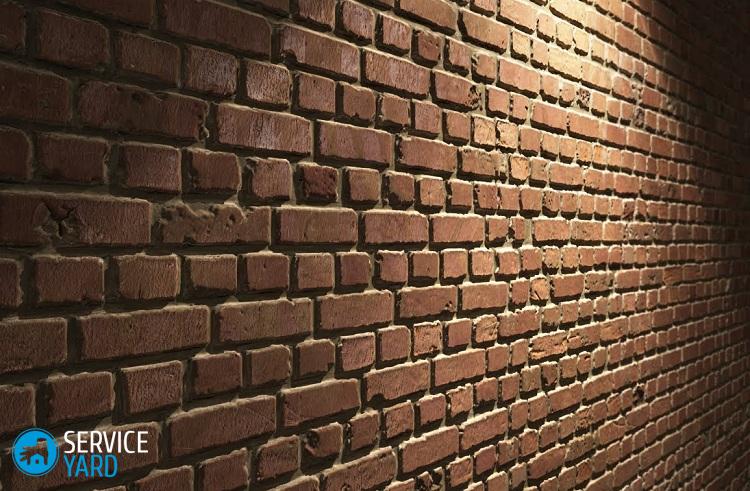
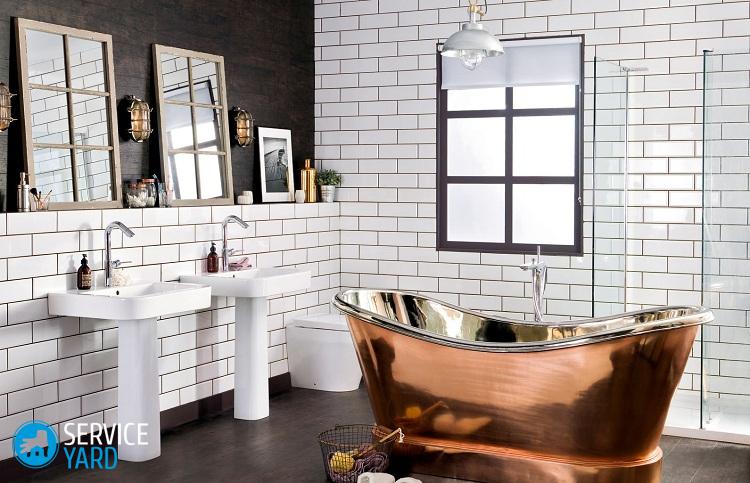
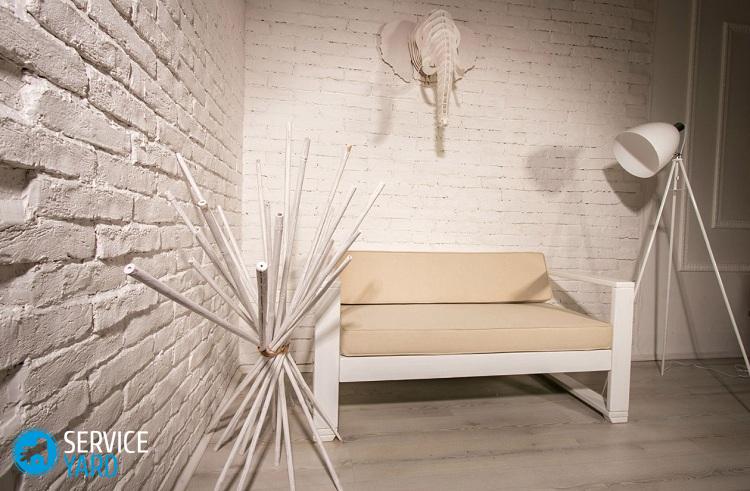
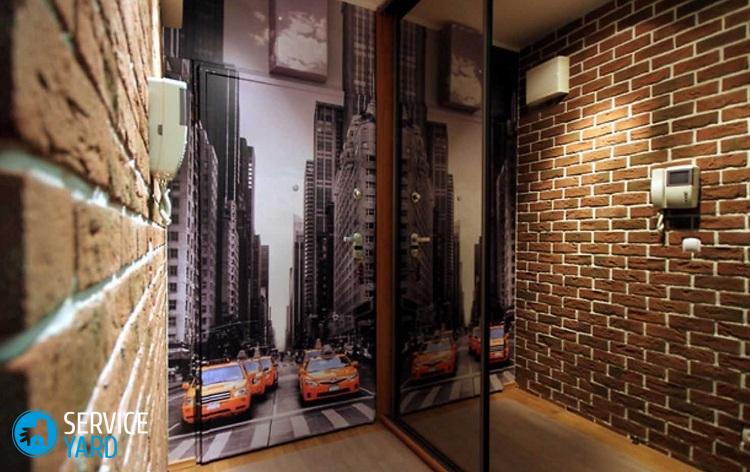
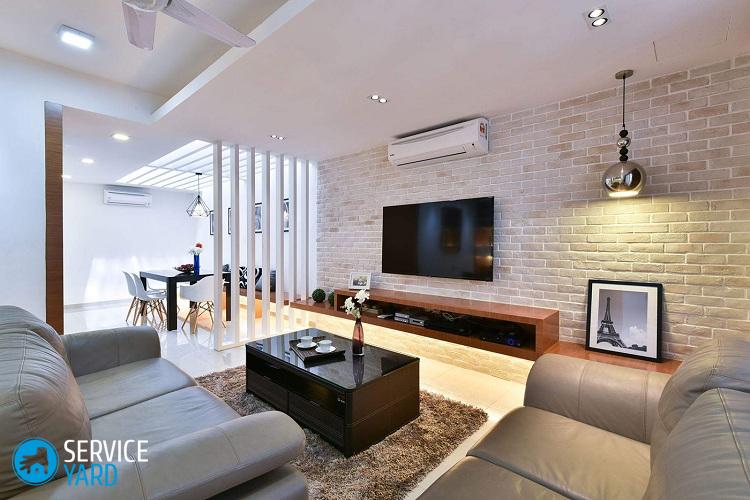


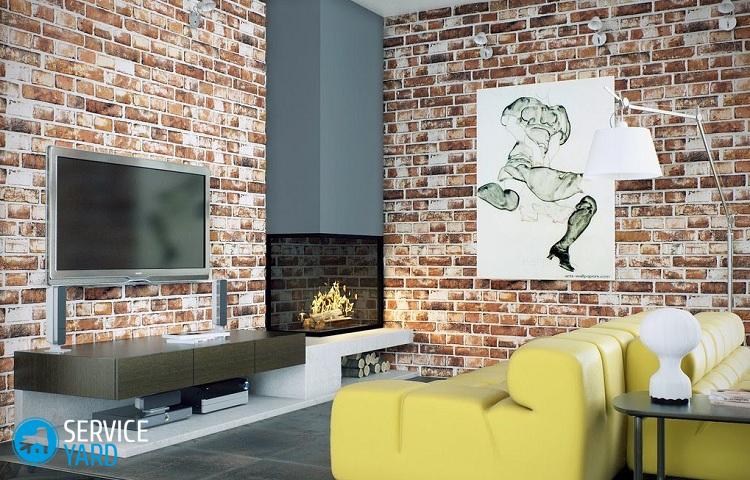
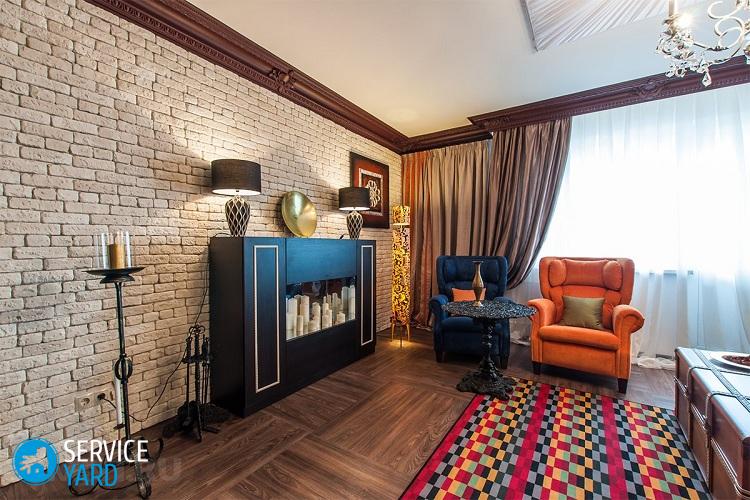
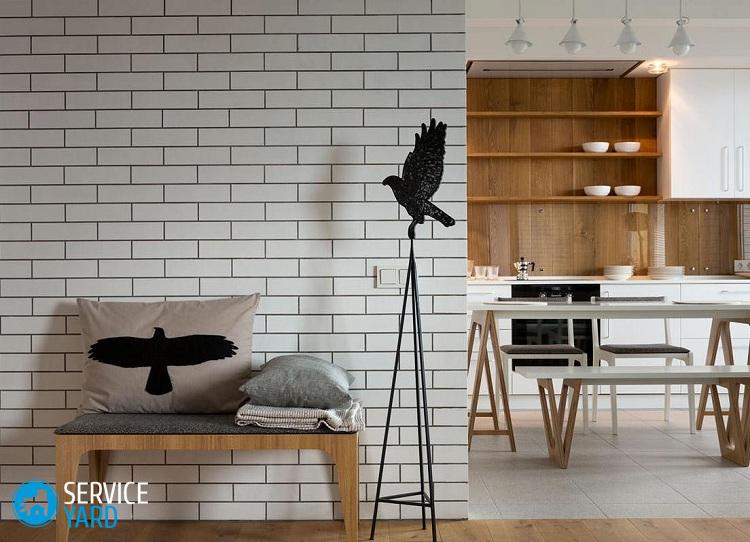
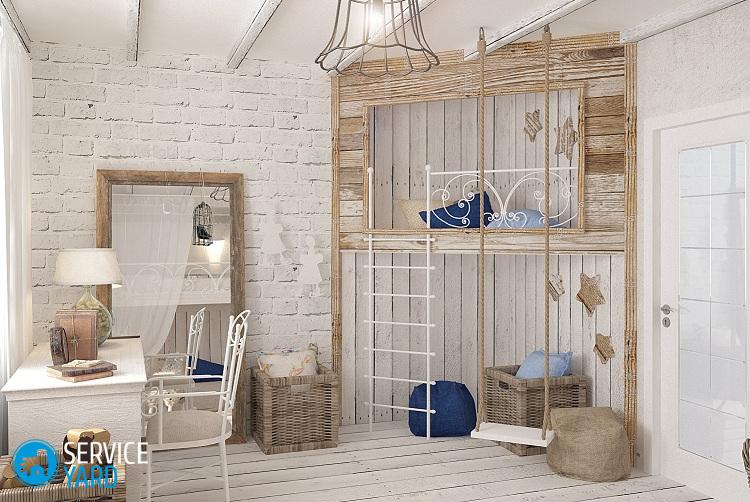
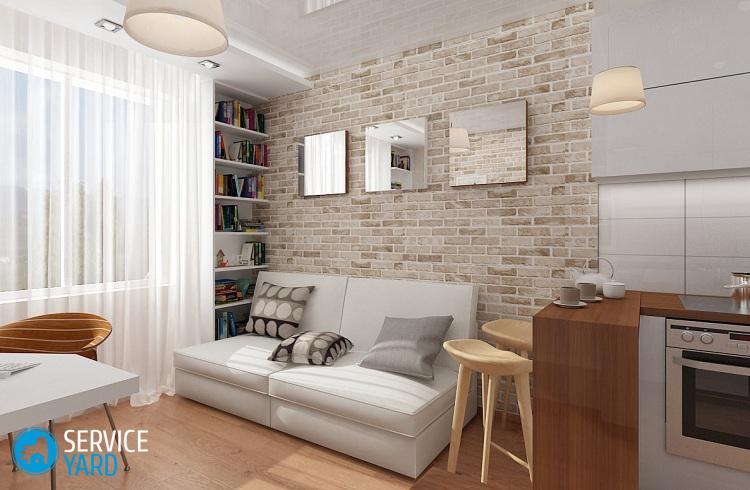
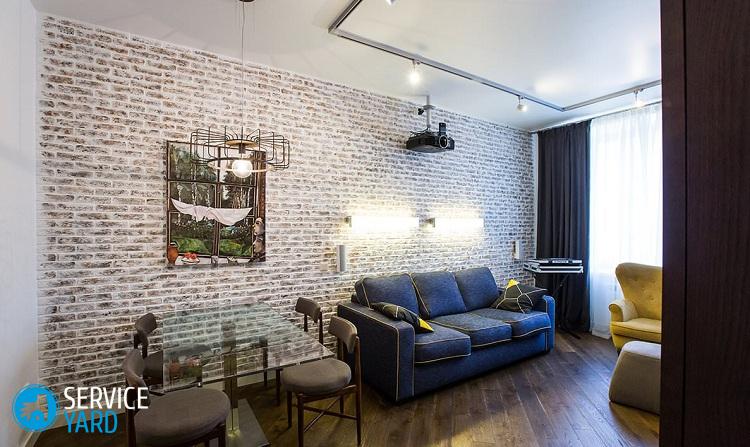
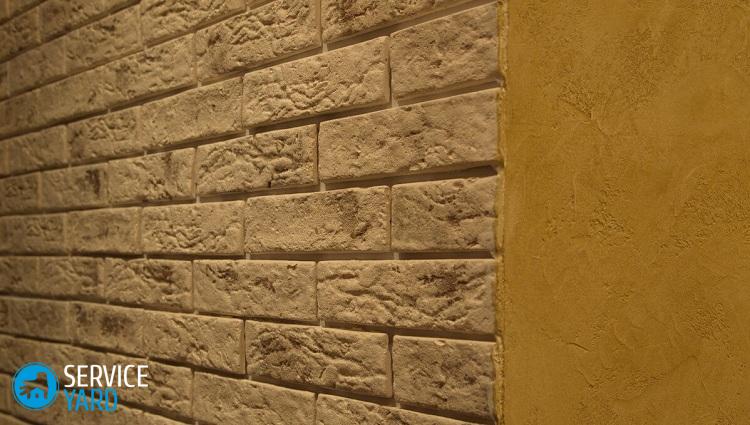
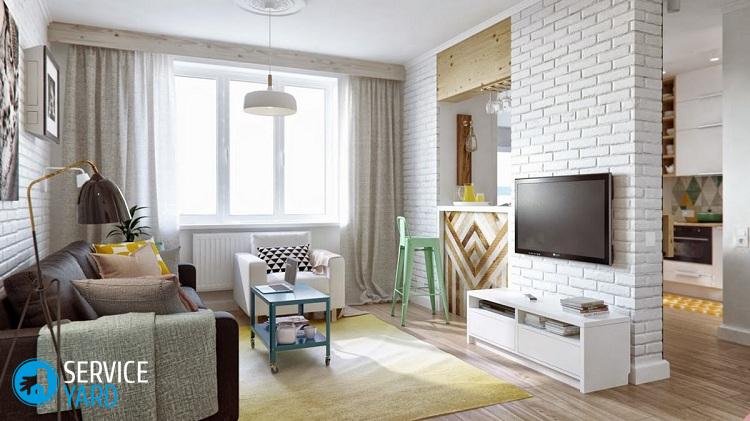
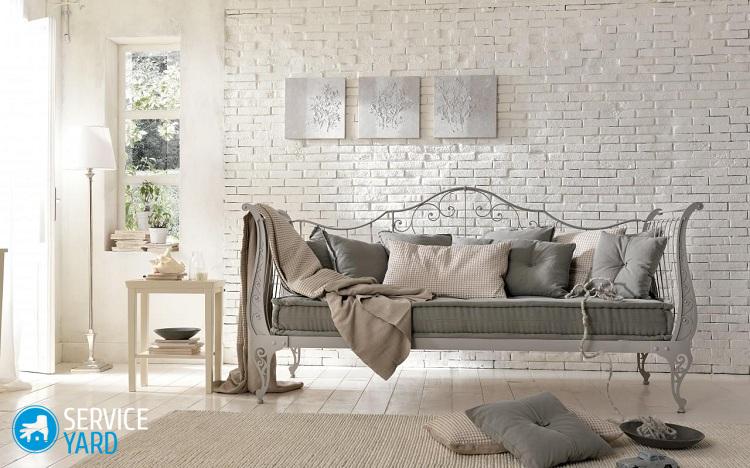
Report typo
Text to be sent to our editors: